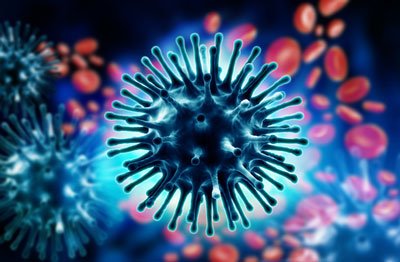Major advance towards long-lasting universal influenza vaccine
Posted: 25 August 2015 | Victoria White
Scientists from The Scripps Research Institute (TSRI) and Janssen have found a way to induce antibodies to fight a wide range of influenza subtypes…


Scientists from The Scripps Research Institute (TSRI) and Janssen have found a way to induce antibodies to fight a wide range of influenza subtypes.
The finding could one day eliminate the need for repeated seasonal flu shots.
“This study shows that we’re moving in the right direction for a universal flu vaccine,” said Ian Wilson, Hansen Professor of Structural Biology and chair of the Department of Integrative Structural and Computational Biology at TSRI.
Seasonal flu typically causes more than 36,000 deaths every year in the US alone. While a yearly flu shot provides some protection, subtypes not covered by the vaccine can emerge rapidly. This phenomenon was evident in the 2009 spread of the H1N1 subtype that killed an over 150,000 people worldwide.
In the last decade, several studies have shown that some people are capable of making powerful antibodies that can fight many subtypes of influenza at once by targeting a site on the influenza virus that does not mutate rapidly. Unfortunately, these “broadly neutralising antibodies,” or bnAbs, are rare.
Janssen and TRSI set out to create an influenza vaccine that elicited bnAbs
Still, the tantalising existence of broadly neutralising antibodies led Janssen and TRSI to try creating an influenza vaccine specially designed to elicit them.
Researchers zeroed in on a possible target: a protein on the surface of influenza, called hemagglutinin (HA). HA is present on all subtypes of influenza, providing the key viral “machinery” that enables the virus to enter cells. Most importantly, the long “stem” region of HA, which connects the virus to cells, plays such a crucial role that mutations at the site are unlikely to be passed on.
To create antibodies against the HA stem, the research team looked to influenza’s own structure, specifically the universal recognition site of the broadly protective antibody CR9114 in the HA stem.
The effort represents the first time scientists have been able to cut off the variable head region of HA, designing features able to stabilise the conformation of the original protein, and at the same time faithfully mimicking the key broadly neutralising site. The ultimate goal was to use this synthetic version of the HA stem in a vaccine to teach the body to make powerful antibodies against influenza virus, priming it to fight off a variety of flu strains.
One immunogen produced antibodies that could bind with HAs in influenza in animal models
The scientists studied the response of rodent and nonhuman primate models given one of several candidate immunogens. They found that animals given one especially stable immunogen produced antibodies that could bind with HAs in many influenza subtypes, even neutralising H5N1 viruses.
“This was the proof of principle,” said Wilson. “These tests showed that antibodies elicited against one influenza subtype could protect against a different subtype.”
The scientists studied the structure of the immunogen at every point in the process. Using the imaging techniques of electron microscopy and x-ray crystallography, the team showed that the most promising candidate immunogen mimicked the HA stem and that antibodies could bind with the immunogen just as they would with a real virus.
With proof that an immunogen can elicit antibodies against the stem region, Wilson said the next step in this research is to see if the immunogen can do the same in humans.
“While there is more work to be done, the ultimate goal, of course, would be to create a life-long vaccine,” Wilson said.
The research findings are published in Science.
Related topics
Universal Cells, X-ray crystallography
Related conditions
Influenza
Related organisations
Janssen Pharmaceuticals, The Scripps Research Institute (TSRI)



